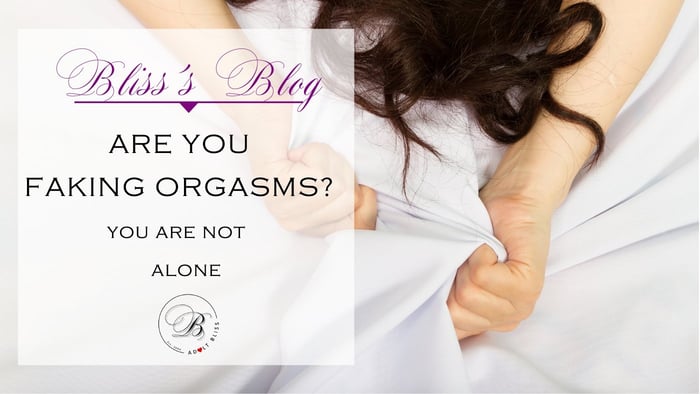
What is Anorgasmia? A Beginners Guide
Jump To Section
What is Anorgasmia?
Well, It is the medical term to describe the specific orgasm disorder where people are unable to orgasm. It can be a little confusing, as the term is sometimes used for penis owners and those with a vulva. Furthermore, orgasmic disorders can affect men and women. The medical profession love to label things, and anorgasmia is one of a group of what is known as female orgasmic disorders. Women with this condition experience significant issues with delayed orgasm, absence of orgasm, fewer and less intense orgasms, and this experience can cause significant distress. To explore this disorder, I will talk about what an orgasm is, the types and causes of anorgasmia, plus treatment and management of the disorder.
Phases of Orgasm
Before we get into what gets in the way people being able to orgasm, we need to understand what exactly an orgasm is. As you can probably imagine, an orgasm is a very complicated process which is both physiological and psychological. It involves multiple body parts aside from the most obvious, genitals and brain; it also includes hormones and nerves that are involved in our sexual responses.
The Sexual Response Cycle
Orgasm is the third of four stages of the sexual response cycle, following the first stage of desire and the second of arousal. Orgasm typically is achieved through physical stimulation, but can also be reached from psychological arousal (think of wet dreams as an example). As you can see, reaching orgasm is dependent on a range of physiological and psychological factors, so it can be difficult to disentangle what may be contributing to a person’s inability to climax.
Magic Wand Rechargeable

$249.95
The Magic Wand® Rechargeable consistently sits atop reviewers’ and mainstream publications’ lists of best vibrators. Named “best overall” by the New York Times three years...… read more
Types and Causes
As well as the symptoms described earlier, anorgasmia can be differentiated into types;
Lifelong (never having had an orgasm),
Acquired (new problems with having an orgasm),
Situational (problems with orgasming only in certain situations), and
Generalised (problems with achieving orgasm in any situation). When It Becomes a Problem
The main feature is not only the absence of orgasm, but that it causes significant distress in the person experiencing it. It is totally fine not to be able to orgasm, and have this not worry you, but if the converse is true, then getting to the cause of it is the first step to manage the condition.
Common Causes and Risk Factors
As I have written previously, lack of orgasms among women have different causes and factors involved. Because orgasm is a complex physical and psychological process, there are many points where your journey towards climax can be interrupted. Personal and psychological factors, relationship factors, physical causes and co-morbid sexual disorders can all play a role. Anorgasmia is also linked to the following risk factors: low education, low income, poor health, mental health conditions and history of trauma.

Living With Anorgasmia
Working out the cause of an individual’s anorgasmia can be a difficult process, as it includes exploring all the different factors that may be impacting.
Diagnosis and Treatment Options
Diagnosing and treating the condition may also include testing such as blood work to investigate hormone levels and transvaginal ultrasound to see if there are any structural factors contributing to lack of orgasms. Treatment is dependent upon the cause; for example, if it is a lack of the hormone estrogen, then a replacement therapy may be used. If it is psychological or relationship factors, then counselling or psychotherapy may be an appropriate treatment. Seeking medical attention from a sex positive practitioner to identify the cause (or causes) and develop a plan to manage or treat the condition is something you should prioritise.
Supporting Yourself or a Partner
Living with and supporting a partner who has the condition, can take a toll on physical, psychological, and emotional wellbeing. However, it can be viewed as providing an opportunity to improve communication, explore your body sexually, experiment with different sexual activities and rethink what it means to have sex. Sometimes, we become so hung up on getting to the outcome (the orgasm) that we neglect the journey along the way. Your sexual pleasure and health is worth prioritising, and if you are struggling with anorgasmia, do not let embarrassment or fear get in the way of you seeking help.
About the Author
Rem Sequence is an Australian adult content creator, blogger, and internationally published alt model. She has a background in psychology, philosophy and political science and worked in health and sex education, youth work and trauma counselling for almost two decades. Now, she works full time in the adult industry, as well as indulging her passion for arts, writing and music in numerous side projects
FAQs
What is anorgasmia?
Anorgasmia is a medical term for the inability to reach orgasm, even with sufficient sexual stimulation. It can affect people of any gender and may cause significant emotional distress if it interferes with sexual wellbeing.
Can women have anorgasmia?
Yes. Anorgasmia is often classified as a type of female orgasmic disorder, where women may experience delayed orgasms, reduced intensity, or an inability to climax at all.
What are the different types of anorgasmia?
There are four main types:
Lifelong: The person has never had an orgasm.
Acquired: The person used to orgasm but no longer can.
Situational: Orgasm only occurs in certain situations or with certain partners.
Generalised: Orgasm is difficult or impossible in any setting or scenario.
What causes anorgasmia in women?
Causes can be physical, psychological, or emotional. Common factors include hormone imbalances, relationship issues, low self-esteem, mental health conditions, trauma history, or co-existing sexual dysfunctions.
Can stress or trauma cause anorgasmia?
Yes. Psychological factors like stress, anxiety, depression, and past trauma can all interfere with a person’s ability to experience orgasm, especially if left unaddressed.
How is anorgasmia diagnosed?
Diagnosis may involve discussing your sexual history with a qualified professional and may include hormone testing or a pelvic ultrasound to identify physical causes.
Is there treatment for anorgasmia?
Yes. Treatment depends on the cause. Options include hormone therapy, sex therapy, relationship counselling, psychological support, and lifestyle changes. The first step is seeing a sex-positive healthcare provider.
Can anorgasmia go away on its own?
Sometimes, especially if it’s caused by temporary factors like stress or medication side effects. However, if it’s persistent and distressing, professional help is recommended.
Can you still have a satisfying sex life with anorgasmia?
Absolutely. Orgasm is just one part of sexual intimacy. Many people explore pleasure in other ways—through connection, touch, and new experiences. Focusing on communication and pleasure, rather than just the outcome, can be liberating.










